Yingpeng Deng
DNN-Compressed Domain Visual Recognition with Feature Adaptation
May 13, 2023



Abstract:Learning-based image compression was shown to achieve a competitive performance with state-of-the-art transform-based codecs. This motivated the development of new learning-based visual compression standards such as JPEG-AI. Of particular interest to these emerging standards is the development of learning-based image compression systems targeting both humans and machines. This paper is concerned with learning-based compression schemes whose compressed-domain representations can be utilized to perform visual processing and computer vision tasks directly in the compressed domain. In our work, we adopt a learning-based compressed-domain classification framework for performing visual recognition using the compressed-domain latent representation at varying bit-rates. We propose a novel feature adaptation module integrating a lightweight attention model to adaptively emphasize and enhance the key features within the extracted channel-wise information. Also, we design an adaptation training strategy to utilize the pretrained pixel-domain weights. For comparison, in addition to the performance results that are obtained using our proposed latent-based compressed-domain method, we also present performance results using compressed but fully decoded images in the pixel domain as well as original uncompressed images. The obtained performance results show that our proposed compressed-domain classification model can distinctly outperform the existing compressed-domain classification models, and that it can also yield similar accuracy results with a much higher computational efficiency as compared to the pixel-domain models that are trained using fully decoded images.
Learning-based Compression for Material and Texture Recognition
Apr 16, 2021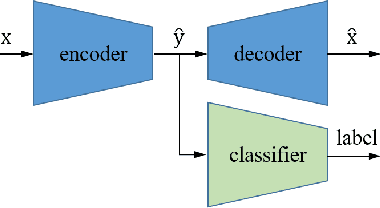
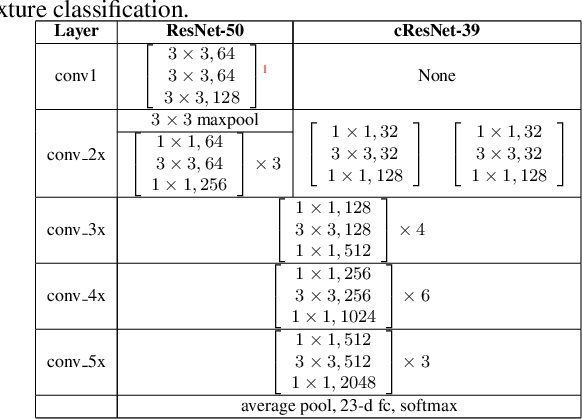
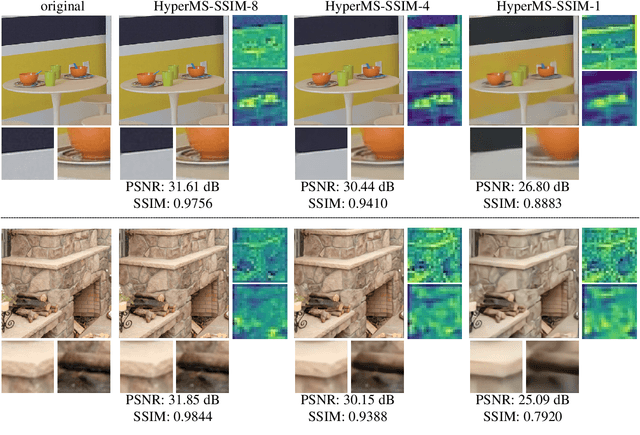
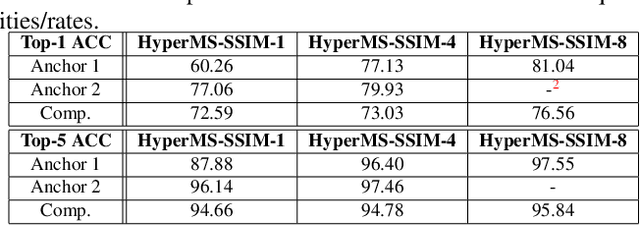
Abstract:Learning-based image compression was shown to achieve a competitive performance with state-of-the-art transform-based codecs. This motivated the development of new learning-based visual compression standards such as JPEG-AI. Of particular interest to these emerging standards is the development of learning-based image compression systems targeting both humans and machines. This paper is concerned with learning-based compression schemes whose compressed-domain representations can be utilized to perform visual processing and computer vision tasks directly in the compressed domain. Such a characteristic has been incorporated as part of the scope and requirements of the new emerging JPEG-AI standard. In our work, we adopt the learning-based JPEG-AI framework for performing material and texture recognition using the compressed-domain latent representation at varing bit-rates. For comparison, performance results are presented using compressed but fully decoded images in the pixel domain as well as original uncompressed images. The obtained performance results show that even though decoded images can degrade the classification performance of the model trained with original images, retraining the model with decoded images will largely reduce the performance gap for the adopted texture dataset. It is also shown that the compressed-domain classification can yield a competitive performance in terms of Top-1 and Top-5 accuracy while using a smaller reduced-complexity classification model.
Towards Imperceptible Universal Attacks on Texture Recognition
Nov 24, 2020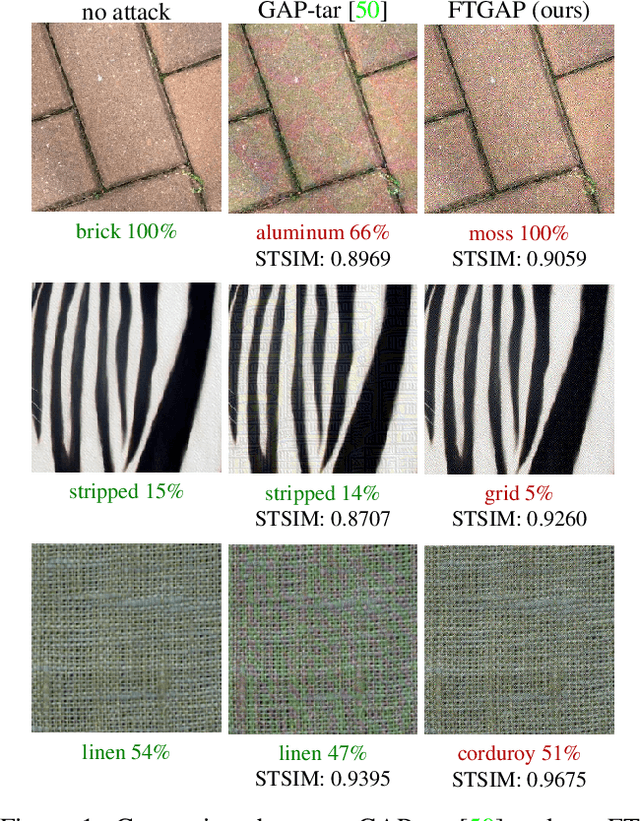
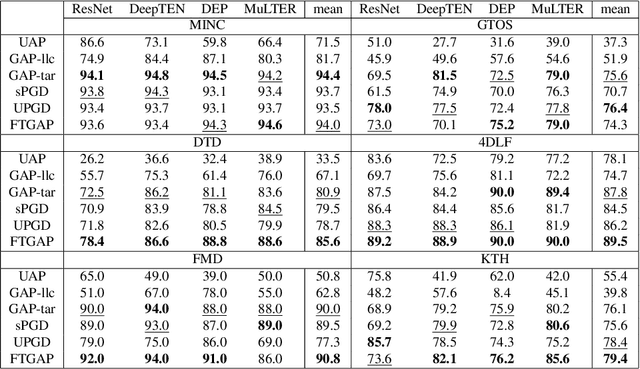

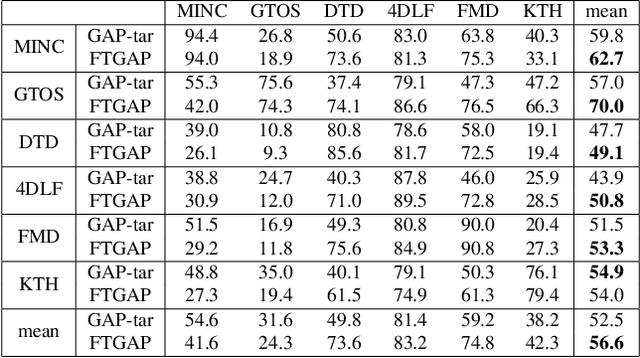
Abstract:Although deep neural networks (DNNs) have been shown to be susceptible to image-agnostic adversarial attacks on natural image classification problems, the effects of such attacks on DNN-based texture recognition have yet to be explored. As part of our work, we find that limiting the perturbation's $l_p$ norm in the spatial domain may not be a suitable way to restrict the perceptibility of universal adversarial perturbations for texture images. Based on the fact that human perception is affected by local visual frequency characteristics, we propose a frequency-tuned universal attack method to compute universal perturbations in the frequency domain. Our experiments indicate that our proposed method can produce less perceptible perturbations yet with a similar or higher white-box fooling rates on various DNN texture classifiers and texture datasets as compared to existing universal attack techniques. We also demonstrate that our approach can improve the attack robustness against defended models as well as the cross-dataset transferability for texture recognition problems.
A Study for Universal Adversarial Attacks on Texture Recognition
Oct 04, 2020
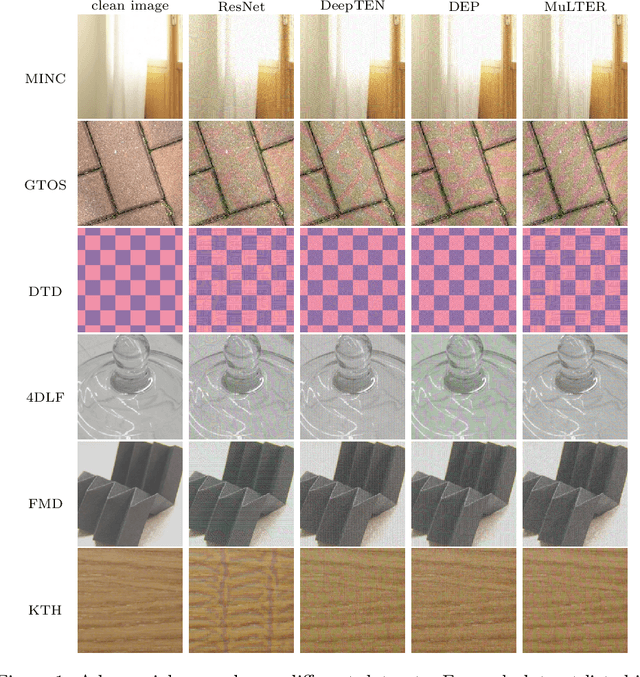

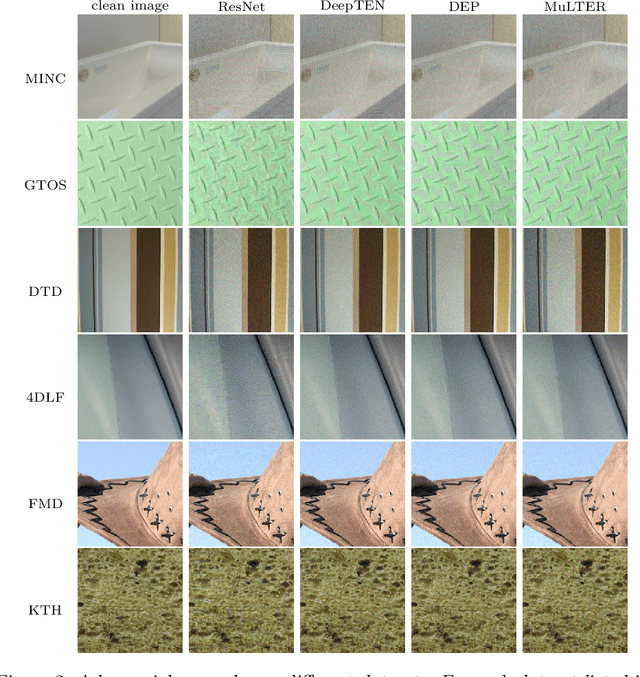
Abstract:Given the outstanding progress that convolutional neural networks (CNNs) have made on natural image classification and object recognition problems, it is shown that deep learning methods can achieve very good recognition performance on many texture datasets. However, while CNNs for natural image classification/object recognition tasks have been revealed to be highly vulnerable to various types of adversarial attack methods, the robustness of deep learning methods for texture recognition is yet to be examined. In our paper, we show that there exist small image-agnostic/univesal perturbations that can fool the deep learning models with more than 80\% of testing fooling rates on all tested texture datasets. The computed perturbations using various attack methods on the tested datasets are generally quasi-imperceptible, containing structured patterns with low, middle and high frequency components.
Frequency-Tuned Universal Adversarial Attacks
Mar 11, 2020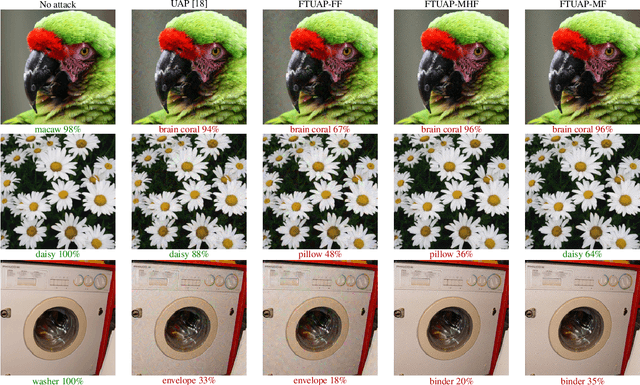

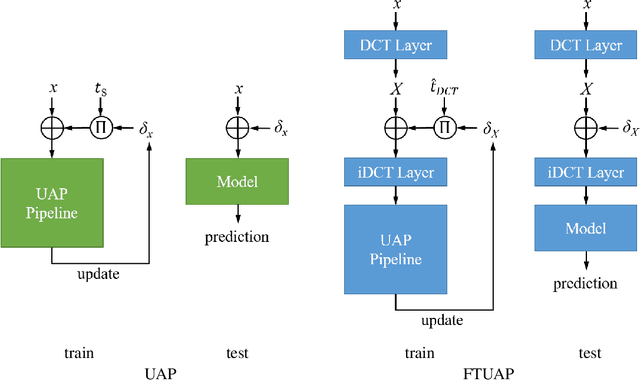

Abstract:Researchers have shown that the predictions of a convolutional neural network (CNN) for an image set can be severely distorted by one single image-agnostic perturbation, or universal perturbation, usually with an empirically fixed threshold in the spatial domain to restrict its perceivability. However, by considering the human perception, we propose to adopt JND thresholds to guide the perceivability of universal adversarial perturbations. Based on this, we propose a frequency-tuned universal attack method to compute universal perturbations and show that our method can realize a good balance between perceivability and effectiveness in terms of fooling rate by adapting the perturbations to the local frequency content. Compared with existing universal adversarial attack techniques, our frequency-tuned attack method can achieve cutting-edge quantitative results. We demonstrate that our approach can significantly improve the performance of the baseline on both white-box and black-box attacks.
 Add to Chrome
Add to Chrome Add to Firefox
Add to Firefox Add to Edge
Add to Edge